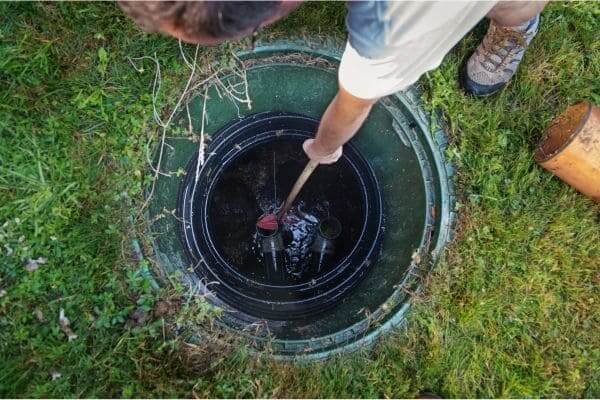Proper septic tank maintenance is essential to avoid serious problems in your sanitation system. Knowing the signs that your septic tank needs to be emptied can prevent costly repairs and ensure efficient operation.
Signs of a full septic tank
Gurgle sounds
Gurgling sounds in drains or toilets are a clear sign that your septic tank may be full. These sounds occur when there is a blockage in the system, indicating that debris is preventing normal flow. You can find out more about how these sounds are an early and reliable indicator that the septic tank needs attention in a study conducted by the U.S. Environmental Protection Agency (EPA).
High septic tank levels
Checking the level of your septic tank is a straightforward way to determine if it needs to be emptied. If upon inspection you find that the level is near the top, it is time to take action. For those who are not familiar with this task, it is advisable to seek the help of a professional.
Inspection records
Keeping an up-to-date record of previous septic tank inspections and emptyings can help you determine when the next service is needed. The frequency of service depends on several factors, including the size of the pit and the amount of use. If it has been a long time since the last flush, it is likely that one will be necessary soon.
Increased water use
Increased water usage, such as during events with many guests or frequent laundry, can quickly overload your septic system. This increased water flow can lead to faster than normal filling of the septic tank, which may require early emptying.
Stagnant water
The presence of standing water near your drain field or septic tank may indicate a problem. It is important to consider recent weather conditions, as a saturated drainfield due to heavy rains may not be an immediate indicator of a full septic tank. However, if the problem persists after dry weather, it could be a sign that the pit needs to be emptied.
Preventive maintenance
It is preferable to empty the septic tank before problems arise. The general recommendation is to empty the pit every 3 to 5 years, but this may vary depending on the size of the pit and the amount of wastewater generated. Preventive maintenance can avoid costly repairs and keep your system running smoothly.
Frostbite prevention in cold climates
In areas where temperatures drop considerably, septic tanks can freeze. Symptoms include malfunctioning toilets and drains and problems with water-using appliances. In these cases, it is crucial to seek the help of a professional. Remember that adding chemicals or salt to thaw can damage the septic system.
Durability and service life of the septic system
While a well-maintained septic system can last for decades, it is crucial to recognize when it might need an overhaul or replacement. Older systems may not be as efficient or have problems that are not obvious to the naked eye. A regular inspection can help determine the health of your system and whether it is time to consider a replacement or upgrade.
Additional factors to consider
It is important to consider other factors that may influence the frequency of septic tank emptying. For example, if your household uses a garbage disposal, this may increase the amount of solids in the pit, which may require more frequent emptying. In addition, excessive use of cleaning chemicals can affect the biology within the septic tank, which can also influence its maintenance.
Importance of professional care
Since emptying and maintaining a septic tank can be a complicated and potentially dangerous process, it is advisable to rely on professionals. Septic system experts can provide a safer and more effective service, ensuring that your septic tank is managed in a proper and environmentally friendly manner.


Recent Comments